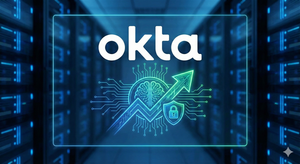
In a monumental shift within the global commodities landscape, China's Zijin Mining Group (HKG: 2899) has achieved a market capitalization exceeding $100 billion, firmly establishing itself as the world's third-largest metals miner by market value. This remarkable ascent, confirmed in September 2025, not only signifies a profound milestone for the company but also signals a significant recalibration of power dynamics within the international mining industry. Driven by a strategic focus on copper and gold, coupled with aggressive expansion and robust operational performance, Zijin's valuation surge immediately positions it as a formidable competitor to long-standing Western giants.
The implications of Zijin's new status are far-reaching. For the company, it translates into enhanced financial power to fuel further strategic acquisitions and ambitious global expansion projects, particularly in critical minerals. For the broader mining sector, it heralds a more competitive environment, with intensified competition for major assets and a heightened focus on critical mineral supply chain security. This development underscores the growing influence of Chinese enterprises in key global industries and foreshadows a new era of strategic competition and collaboration in resource development worldwide.
Detailed Coverage: Zijin's Ascent to Global Mining Elite
Zijin Mining Group's (HKG: 2899) market capitalization officially crossed the $100 billion threshold on a Thursday in late September 2025, with its Shanghai-listed shares reaching a record high, pushing its valuation to approximately $103 billion USD (732 billion yuan). This historic achievement propelled the Chinese mining behemoth past Brazil's Vale (NYSE: VALE), securing its place as the third-largest mining company globally by market value, standing shoulder-to-shoulder with titans such as BHP (ASX: BHP) and Rio Tinto (ASX: RIO).
The company's journey to this pinnacle has been marked by decades of strategic foresight, aggressive global expansion, and capitalizing on favorable commodity markets. Founded in the 1980s by geologist and current chairman Chen Jinghe, Zijin began as a modest gold miner in southeastern China. Its trajectory shifted dramatically with a series of significant acquisitions from 2015 onwards, including Phoenix Gold in 2015, Continental Gold in 2019, Guyana Goldfields in 2020, and a strategic entry into lithium with Neo Lithium Corporation in 2021. The period leading up to 2025 saw further substantial investments, such as the Akyem gold project in Ghana, the La Arena gold mine in Peru, and a crucial acquisition of a 24.82% interest in Zangge Mining (SZSE: 000408) in January 2025, solidifying control over key copper, lithium, and potash assets. In June 2025, the acquisition of the Raygorodok gold mine in Kazakhstan further consolidated its international gold portfolio.
Financially, Zijin has demonstrated exceptional performance, serving as the bedrock for its valuation surge. In 2024, the company reported revenues of 303.6 billion yuan and a net income soaring by 52% to 32.1 billion yuan. This momentum continued into the first half of 2025, with net profit attributable to shareholders increasing by 54.4% year-on-year to RMB 23.3 billion (US$3.25 billion), on revenues of RMB 167.7 billion. The company's stock performance mirrored this success, more than doubling in 2025, with its shares rising an impressive 78% over the preceding year and over 50% in the three months leading up to the September milestone. These gains were primarily fueled by record gold prices and copper's strongest year on record, which together accounted for 77% of Zijin's first-half 2025 revenue, alongside robust demand from China's renewable energy and electrification sectors.
Key stakeholders in this achievement include Zijin Mining Group Co. Ltd. itself, with Chairman Chen Jinghe as a pivotal figure steering its strategic direction. The company's upcoming spin-off and Hong Kong listing of its international gold business, Zijin Gold International Co., managing all its gold mines outside China, is a significant move expected to raise $3.2 billion and unlock further value, with an estimated valuation between $24 billion and $40 billion. Initial market reactions have been largely positive, with analysts from firms like Jefferies, Citi, HSBC, UBS, and DBS Bank highlighting the potential for further value unlocking through the spin-off and projecting strong earnings growth. While some debates emerged regarding the valuation, the overall sentiment was bullish, driven by strong commodity markets and the strategic benefits of the pure-play gold listing.
Market Repercussions: Winners and Losers in a Shifting Landscape
Zijin Mining Group's (HKG: 2899) ascension to the third-largest global miner by market capitalization profoundly reshapes the competitive landscape, creating clear winners and losers among industry players. This shift is particularly amplified by Zijin's aggressive strategic maneuvers, including the planned $3.2 billion Hong Kong IPO of its international gold mining assets, Zijin Gold International, in late September 2025, and its recent $1.2 billion acquisition of the Raygorodok Gold Mine in Kazakhstan in June 2025.
Among the clear beneficiaries is Zijin Gold International, which, upon its independent listing, will gain direct access to substantial capital through its $3.2 billion IPO. This funding is earmarked to fuel its aggressive international expansion, enabling accelerated development of existing gold assets and further strategic acquisitions, thereby solidifying its position as a major global gold producer. Strategic partners like Ivanhoe Mines (TSX: IVN) also stand to gain significantly. As a key collaborator in major copper projects such as the Kamoa-Kakula mine in the Democratic Republic of Congo, Ivanhoe will benefit from Zijin's enhanced financial strength and larger capital base, ensuring continued investment and expansion of these high-grade copper assets. Similarly, Zangge Mining (SZSE: 000408), where Zijin acquired a controlling stake in January 2025, will leverage Zijin's strategic direction, capital infusion, and operational expertise, particularly for its high-quality copper, lithium, and potassium resources.
The ripple effect also extends to junior miners with attractive assets, who become prime acquisition targets for a financially empowered Zijin, potentially yielding significant premiums for their shareholders. The increased activity from a larger Zijin will also boost demand for mining services and equipment providers, benefiting companies across this crucial supply chain. Furthermore, commodity traders and brokers are likely to see higher transaction volumes and greater market activity as Zijin's production volumes and diversified portfolio across gold, copper, zinc, and lithium expand.
Conversely, Zijin's rise intensifies competition, posing challenges for several segments of the industry. Smaller and mid-tier gold and copper producers are particularly vulnerable. They will struggle to compete with Zijin's immense scale, superior cost efficiencies, and aggressive bidding power for desirable mining assets and skilled labor. The prevailing sentiment is that "the big ones are getting bigger and the midsize ones are getting eaten up," making independent growth increasingly difficult for these companies. Even other major diversified mining companies like BHP Group (ASX: BHP), Rio Tinto (ASX: RIO), and Glencore (LSE: GLEN) may face intensified bidding wars for new deposits and potentially higher acquisition costs as Zijin expands its portfolio in key commodities.
Leading gold producers such as Newmont Corporation (NYSE: NEM) and Barrick Gold (NYSE: GOLD) face direct and heightened competition. Newmont has already divested its Akyem gold mine in Ghana to Zijin for $1 billion in October 2024. A more dominant Zijin, bolstered by its new international gold IPO capital, could limit future acquisition opportunities for these established players or significantly drive up the price of such deals, impacting their long-term growth strategies in the gold sector. Lastly, while Zijin Mining itself acknowledges the risks of resource nationalism and geopolitical rivalry, its aggressive global expansion as a prominent Chinese entity might, in some jurisdictions, exacerbate concerns about foreign control over critical mineral resources. This could lead to increased regulatory scrutiny or community resistance, potentially impacting other companies perceived as foreign operators in those regions or triggering similar concerns for non-Chinese companies seeking to expand in those areas.
Broader Implications: A New Era for Global Resource Dynamics
Zijin Mining Group's (HKG: 2899) crossing of the $100 billion valuation mark and its ascension to the world's third-largest miner in September 2025 is a watershed moment, deeply interwoven with and reflective of several profound shifts in the global mining industry and geopolitical landscape. This milestone positions Zijin as a formidable peer to established Western giants like BHP (ASX: BHP) and Rio Tinto (ASX: RIO).
This rapid rise aligns perfectly with the intensifying commodity supercycle, particularly for metals crucial to the global energy transition. Zijin's valuation surge is directly attributed to record gold prices and copper's strongest year on record, which together accounted for 77% of its first-half 2025 revenue. This trend underscores the insatiable demand for critical minerals—such as copper, lithium, nickel, and cobalt—essential for electric vehicles, renewable energy infrastructure, and advanced electronics, fundamentally reshaping the mining sector's priorities and investment flows. Concurrently, Zijin's success highlights China's expanding influence in the global mining sector, not merely as a voracious consumer but as a dominant producer, processor, and investor in critical minerals worldwide. China's strategic imperative to secure resources for its industrial growth and green energy ambitions is clearly manifested through the aggressive global expansion of its national champions like Zijin.
The ripple effects on competitors and partners are substantial. Zijin's elevated status signifies increased competition and market share shifts, directly challenging the long-held dominance of Western mining majors. Its aggressive expansion, particularly in copper and gold, will intensify competition for new projects and existing assets, potentially driving up acquisition costs and compelling other major miners to re-evaluate their own growth strategies. This dynamic could lead to further industry consolidation or strategic alliances. Furthermore, Zijin's successful strategy, including its significant overseas investments and the planned Hong Kong listing for its international gold business to raise $3.2 billion, demonstrates the growing importance of diverse investment and financing dynamics in the capital-intensive mining sector. Given China's comprehensive involvement in mineral processing and related supply chains, Zijin's enhanced production capacity also solidifies China's control over global commodity flows, potentially influencing pricing, availability, and trade patterns for critical metals worldwide.
The rise of a Chinese mining giant of Zijin's scale also carries significant regulatory and policy implications. Zijin itself has acknowledged that geopolitical conflicts and resource nationalism pose severe challenges to its overseas projects. This global trend, where states seek greater control over mineral wealth through policy changes and stricter regulations, is accelerating, impacting multinational companies. As Zijin expands, it will increasingly navigate these complex geopolitical waters, especially in resource-rich but politically sensitive regions. Moreover, the intensified geopolitical competition for critical minerals among major global powers means Zijin's prominence will likely lead to increased scrutiny of its foreign investments and operations from Western governments, which are actively seeking to diversify their critical mineral supply chains away from China. As a global player, Zijin also faces growing pressure to adhere to international Environmental, Social, and Governance (ESG) standards, with its commitment to sustainable practices being crucial for maintaining its "license to operate" in various jurisdictions.
Historically, the control of mineral resources has always been central to economic and political power, and Zijin's ascent echoes these patterns. Its growth during a commodity boom driven by energy transition metals and persistent gold demand reflects how agile and aggressive companies can rapidly expand their footprint in favorable market conditions. This is comparable to past commodity supercycles that led to significant industry restructuring. Furthermore, China's long-term strategic focus and support for national champions like Zijin provide a modern example of how state-backed industrial policies can foster the growth of global behemoths, drawing parallels to the rise of major diversified mining houses in previous centuries supported by their home nations during periods of industrial expansion. In essence, Zijin's milestone is not just a corporate success story but a powerful indicator of the shifting global economic power, the pivotal role of specific commodities in the energy transition, and China's strategic importance in shaping the future of the global mining industry.
The Road Ahead: Navigating Future Opportunities and Challenges
Zijin Mining Group's (HKG: 2899) ascent to a $100 billion valuation and its status as the world's third-largest miner in September 2025 marks a new chapter, positioning the company for a dynamic future of ambitious growth targets, strategic adaptations, and navigation of complex global market conditions. A pivotal immediate event shaping this outlook is the planned Initial Public Offering (IPO) of Zijin Gold International, its wholly-owned subsidiary consolidating overseas gold assets, scheduled for pricing on September 24, 2025, with a Hong Kong market debut on September 29, 2025. This IPO aims to raise over $3 billion and is set to unlock significant value for its gold business.
In the short-term (1-3 years), Zijin will leverage the substantial capital from the Zijin Gold International IPO to aggressively expand its gold portfolio, particularly in Africa, South America, and Central Asia, building on recent acquisitions like the Akyem mine in Ghana and the Raygorodok gold mine in Kazakhstan. The company is targeting a boost in equity gold production from 40 tons in 2024 to 53.1 tons in 2026, with an ambitious goal of 100-110 tons annually by 2028. Copper production is also slated to reach 750,000 tonnes by 2025, solidifying its position among the world's top five copper producers. Furthermore, Zijin is accelerating the construction of copper, gold, and lithium projects, including the Phase 2 expansion for Julong Copper and the recent launch of production at its Tres Quebradas lithium project in Argentina in September 2025, marking a significant step into the global battery materials space. Continued focus on operational efficiency, cost control, and the implementation of its Three-Year (2023-2025) ESG plan will be critical.
Looking at the long-term (3-10+ years), Zijin aims for global leadership, aspiring to rank among the top 3-5 global copper and gold producers and top 10 in lithium production by 2030, with an accelerated ambition to meet these goals by 2028. The company envisions becoming a "green, high-tech, leading global mining company" by 2030 and a "green, high-tech, top global mining company" by 2040. This includes significant diversification into new energy materials beyond its core, driven by prudent investments in the advanced materials industry. A strong emphasis on technological innovation and green mining practices will be paramount, with plans to peak carbon emissions by 2029 and achieve carbon neutrality across the Group by 2050. Strengthening its global management system to overcome the "mismatch between its growing global footprint and constrained Chinese way of thinking and management" will also be a key strategic adaptation.
However, the road ahead is not without its challenges. Zijin has explicitly recognized "unprecedented geopolitical risks" and "resource nationalism" as significant threats to its overseas projects and future M&A. This necessitates strategic pivots, potentially focusing on "friendly neighboring countries" and strengthening security protocols in politically unstable regions. Efforts by Western nations to bolster their critical mineral output to counter China's dominance could also impact Zijin, potentially requiring greater vertical integration or new partnership models. ESG compliance and standards will become increasingly scrutinized as Zijin expands globally, demanding adaptation to diverse international governance principles and community expectations. Furthermore, while high gold and copper prices have fueled recent growth, commodity price volatility, especially in the lithium market, will require agile risk management.
Emerging market opportunities include sustained strong demand for copper, lithium, and other critical minerals driven by the global green energy transition, particularly from China's robust renewable energy investments. Geopolitical uncertainty, central bank buying, and expectations of US interest rate cuts are also expected to sustain high gold prices, providing a favorable environment for Zijin's gold expansion. Conversely, challenges include rising operating costs due to global inflation, increased regulatory scrutiny (including US forced labor entity list additions in 2025), and potential community conflicts in politically sensitive operational regions.
Potential scenarios range from aggressive growth continuing, where Zijin solidifies its top-tier global position by reaching its 2030 targets earlier, to a focus on optimization and risk mitigation, where it tempers acquisition pace to prioritize efficiency and ESG. A scenario of increased scrutiny and operational hurdles could see escalating geopolitical tensions or stricter regulations leading to delays or even divestitures, forcing consolidation in more stable regions. Lastly, shifting commodity focus might occur if market dynamics, such as sustained lithium price volatility, necessitate a pivot towards more favorable commodities. Ultimately, Zijin's future success hinges on its ability to strategically adapt to complex geopolitical landscapes, manage inherent industry risks, and uphold its commitment to sustainable and responsible mining practices.
Concluding Thoughts: A Redefined Future for Mining
Zijin Mining Group's (HKG: 2899) achievement of a $100 billion market capitalization in September 2025 is far more than a corporate triumph; it is a definitive statement on the evolving landscape of the global mining industry. This milestone solidifies its position as the world's third-largest miner by value, placing it firmly alongside long-established giants and signaling a new era of competition and strategic realignment.
The key takeaways from Zijin's remarkable ascent are its astute capitalization on the commodity supercycle, particularly the sustained rally in gold and copper prices, which fueled a significant portion of its 2025 revenue. This was coupled with an aggressive yet strategically sound global expansion through acquisitions and rapid project development, demonstrating unparalleled operational efficiency. Furthermore, its strategic diversification into critical minerals like lithium and the innovative spin-off of its international gold business, Zijin Gold International, highlight an adaptable approach to optimizing capital and seizing new opportunities in the energy transition. This success story also powerfully underscores the growing influence of Chinese companies in shaping the global mining landscape, backed by a clear commitment to "green, low-carbon, and sustainable growth."
Moving forward, the mining market will continue to be dynamic. Zijin is poised for sustained growth, with analysts anticipating robust revenue increases driven by enhanced production efficiencies and favorable commodity prices. The company's ambitious production targets for copper and gold, coupled with the capital injection from the Zijin Gold International IPO, are expected to strengthen its market position significantly. However, the path ahead is fraught with challenges, including "unprecedented" geopolitical uncertainties, resource nationalism, and the potential for trade protectionism.
The lasting impact of Zijin's rise is a redefined global mining hierarchy, where traditional Western dominance is increasingly challenged by agile, state-backed Chinese entities. It reinforces the strategic importance of critical minerals for the energy transition and highlights the necessity for all major players to integrate robust ESG practices for long-term viability. Zijin's journey serves as a blueprint for rapid growth in a complex world, showcasing the power of strategic acquisitions, operational excellence, and timely market positioning.
Investors keenly watching Zijin Mining in the coming months should closely monitor the performance and capital generation of the Zijin Gold International IPO, as this will dictate future gold project funding and M&A capabilities. Continuous vigilance over commodity price trends for gold, copper, and lithium is crucial, as is tracking the successful execution of its various growth projects (e.g., Julong Copper Phase 2), gold (e.g., Raygorodok), and lithium (Tres Quebradas). Geopolitical developments, including trade policies and resource nationalism, will remain paramount for assessing operational and financial risks. Finally, given its expansion into battery metals, understanding lithium market dynamics and any shifts in analyst sentiment regarding its valuation will be important for navigating this evolving market.
This content is intended for informational purposes only and is not financial advice





